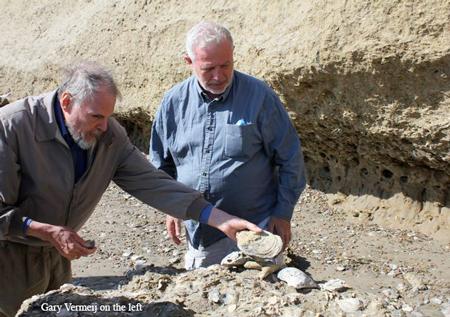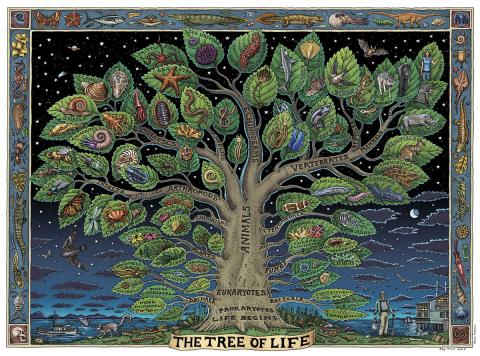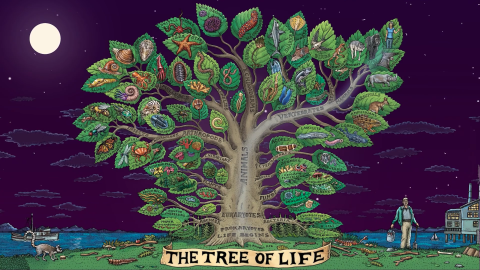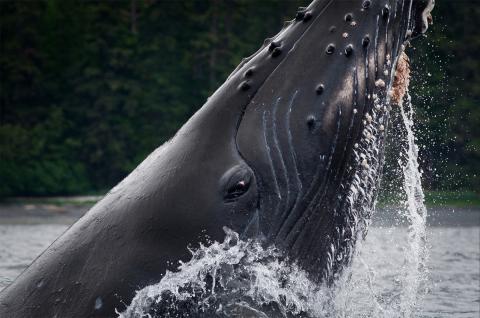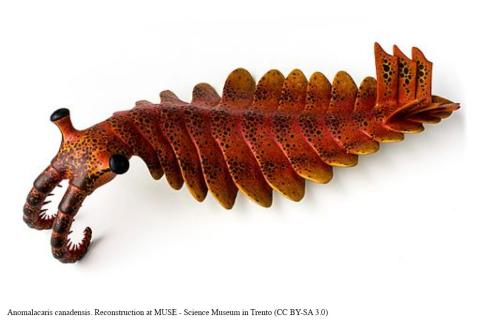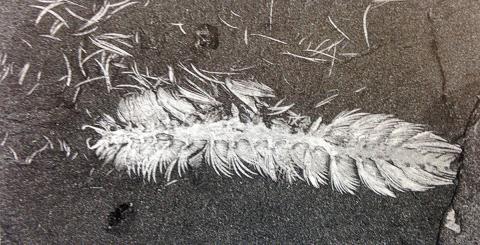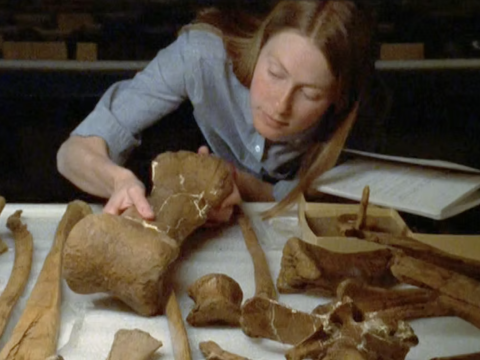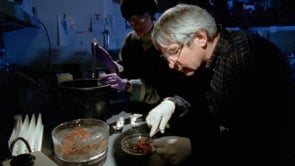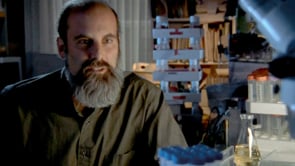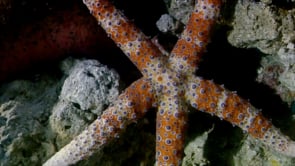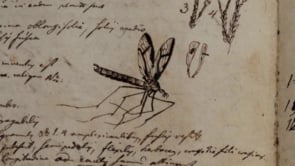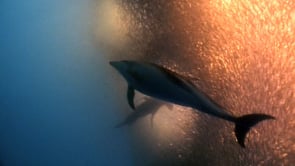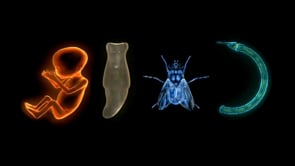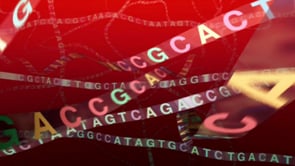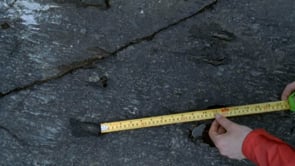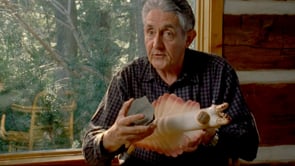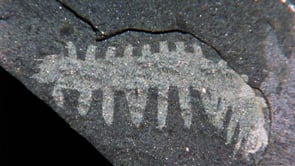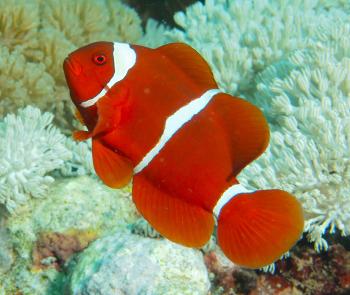Scientists use a tree with branches to represent the common ancestry and evolutionary relationships of earth’s different kinds of organisms. In 1859 Charles Darwin sketched a Tree of Life in his book, “The Origin of Species”. He was explaining how a genus of related species might have originated from a common ancestor. This was the beginning of using a tree as a model for evolution. Since then there have been thousands of Tree of Life drawings as our knowledge has increased.
In 1992 a friend of ours, the artist Ray Troll, created his own gorgeous and quirky version. Since then he has created trees for various animal groups, which we think are delightful and engaging. So, when our friend, biologist Chuck Baxter, was turning 90, we decided to ask Ray to create a new animal Tree of Life for him and for the Shape of Life. Ray agreed, saying “It was a great honor to be asked to do something for Chuck Baxter on such a momentous occasion!”
